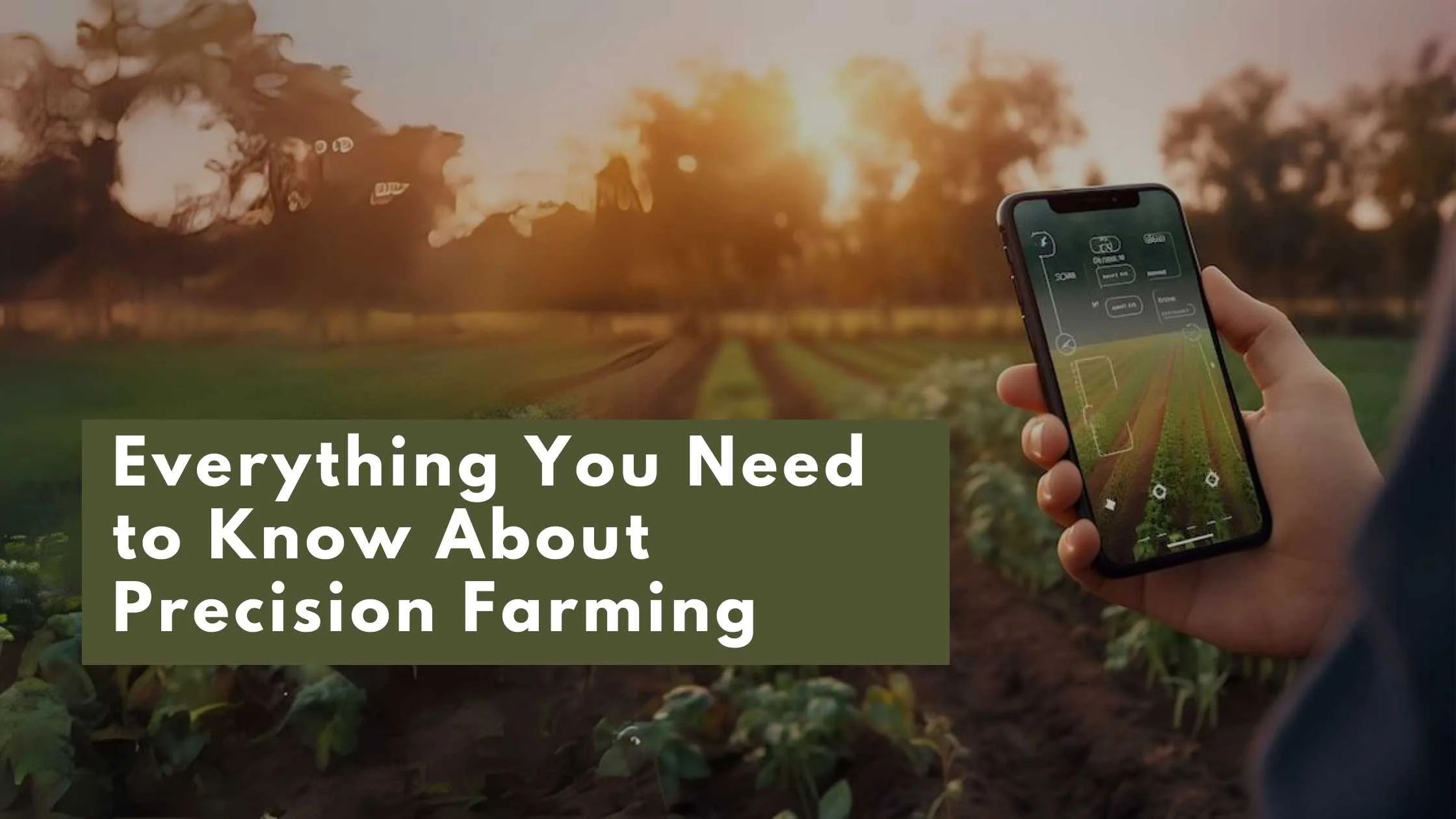What is Precision Agriculture?
Precision agriculture is an agricultural approach that uses technology and data to optimize crop yields, reduce waste, and increase efficiency. It uses advanced technologies such as GPS, sensors, drones, and machine learning to collect data on soil, weather, and other environmental factors that affect crop growth.
This data is then used to create detailed farm maps, which can be used to create customized planting and fertilization plans for each field or specific areas within a field. By tailoring these plans to the specific needs of each crop, farmers can optimize yields while reducing the use of resources such as water, fertilizer, and pesticides.
Precision agriculture can also help farmers reduce waste by identifying areas of the farm that are unproductive or where pest or disease infestations occur. By quickly identifying these areas, farmers can take action to address the problem before it spreads to other parts of the farm.
How Does Precision Agriculture Work?
Precision Agriculture gathers and analyzes data about a farm’s soil, weather, and other environmental factors to create customized planting and management plans for each field. Here are the basic steps involved:
Data Collection:
Precision Agriculture begins with collecting data from various sources, such as soil samples, weather stations, satellite imagery, and sensors on tractors and other farm equipment. This data creates detailed maps of the farm and its various attributes, such as soil type, topography, and moisture content.
Data Analysis:
Once the data has been collected, it is analyzed using advanced analytics tools and machine learning algorithms to identify patterns and relationships between variables. This analysis can help farmers understand the specific needs of their crops and how best to manage them.
Decision-Making:
Based on the results of the data analysis, farmers can make informed decisions about how to manage their crops. This might involve adjusting planting schedules, applying fertilizer and pesticides more precisely, or using irrigation systems tailored to each field’s specific needs.
Implementation:
Finally, customized management plans are implemented on the farm using advanced equipment such as GPS-guided tractors and drones. This allows farmers to precisely target specific areas of their fields and apply treatments only where needed, minimizing waste and maximizing efficiency.
What are the benefits of Precision Agriculture?
Precision Agriculture offers several benefits for farmers, the environment, and society. Here are some of the key advantages:
Increased Crop Yields:
By tailoring planting and management strategies to the specific needs of each crop, Precision Agriculture can increase crop yields and overall productivity.
Reduced Resource Use:
Precision Agriculture can help farmers reduce their use of water, fertilizer, and pesticides by targeting treatments only where needed, reducing waste, and increasing efficiency.
Improved Environmental Sustainability:
By reducing resource use and minimizing waste, Precision Agriculture can help reduce the environmental impact of farming practices.
Cost Savings:
By optimizing crop yields and reducing waste, Precision Agriculture can lead to cost savings for farmers and help them improve their profitability.
Improved Food Quality:
Precision Agriculture can help farmers produce higher-quality crops that are more uniform in size, color, and flavor, improving the overall quality of the food supply.
Better Risk Management:
Precision Agriculture can help farmers identify and address potential problems such as pests, diseases, or nutrient deficiencies before they become significant, reducing the risk of crop losses.
Overall, Precision Agriculture offers a more efficient and sustainable approach to farming that can help farmers improve their profitability while reducing their environmental impact.
Popular Applications for Precision Agriculture
Precision Agriculture has various applications across different crops and farming operations. Here are some of the most popular applications:
Variable Rate Technology:
Variable rate technology uses precision equipment to apply inputs such as fertilizer, pesticides, and water at variable rates across a field based on real-time data about soil moisture, nutrient levels, and other environmental factors.
Soil Mapping and Analysis:
By using sensors and other technologies to map soil characteristics such as pH, organic matter, and moisture content, farmers can create customized management plans for each field that consider the specific needs of different crops.
Crop Scouting:
Farmers can scout their fields for signs of pests, diseases, and other issues using drones and other imaging technologies. This allows them to identify and address potential problems before they become significant quickly.
Yield Monitoring:
Farmers can monitor crop yields in real-time using sensors and GPS technology, allowing them to adjust their management strategies to maximize yields and reduce waste.
Precision Irrigation:
Using sensors and other technologies, farmers can monitor soil moisture levels and adjust irrigation systems to deliver water precisely where and when needed, reducing water waste and improving crop yields.
Autonomous Farming:
With advances in robotics and artificial intelligence, farmers are beginning to adopt autonomous farming technologies that can perform tasks such as planting, harvesting, and crop spraying with minimal human intervention.
Conclusion
In summary, Precision Agriculture is an efficient approach to farming that promotes sustainability & optimizes the use of resources. The approach helps farmers maximize yields while reducing their impact on the environment. Farmers can improve the profitability of their operations through precision agriculture techniques while supporting the environment & sustainability.
Thus, it’s a profitable approach given the environment and for the farmer’s profitability as well.




Thanks for sharing. I read many of your blog posts, cool, your blog is very good.